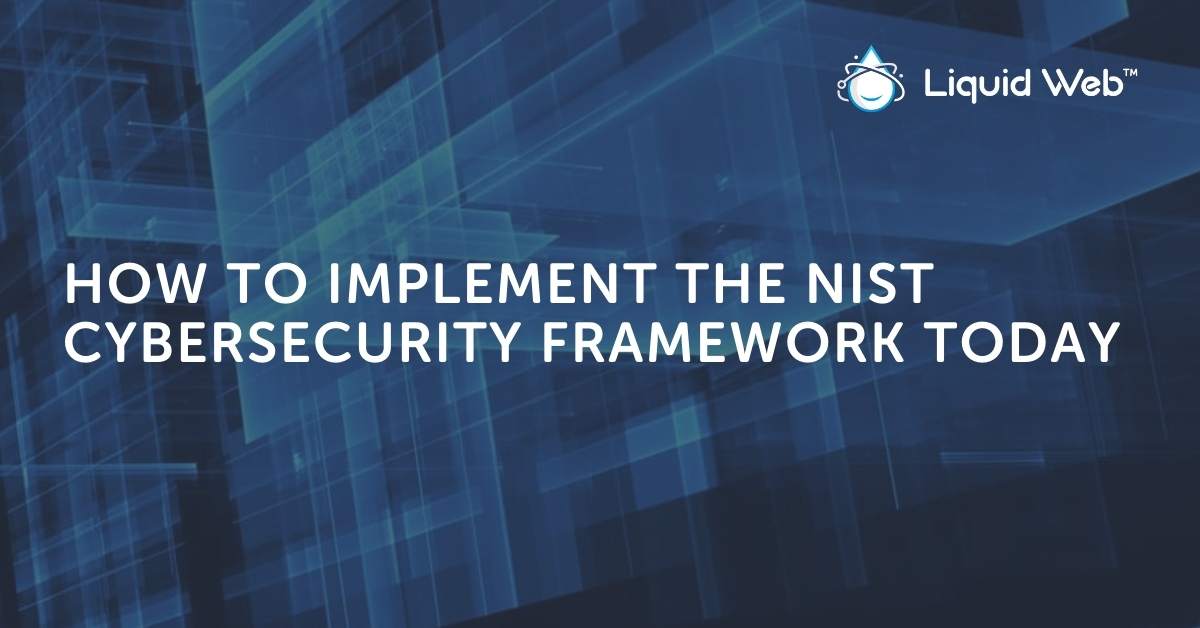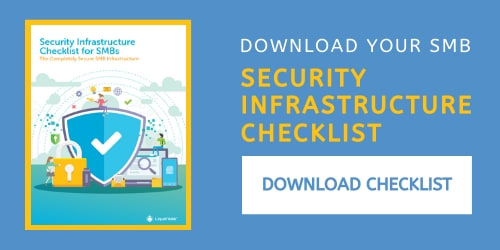
What is the NIST Cybersecurity Framework?
The NIST Cybersecurity Framework is a set of security practices that will help you understand cybersecurity and defend your business from cyber threats. It is a must-have modern tool that will help upgrade and fortify your cybersecurity program. NIST stands for the National Institute of Standards and Technology, which created the cybersecurity framework (CSF).
By learning how to implement the NIST cybersecurity network, you will help protect your business.
Importance of Having a Cybersecurity Framework
Cyber threats are evolving swiftly with scams related to cryptocurrency and system intrusions on the rise. These threats include data breaches, fraud, and theft related to personal and inside business information. NIST was involved to help solve this problem by researching cybersecurity practices and recommending the best strategies and standards to help thwart cybercriminals. NIST, along with leaders in academia, developed the Cybersecurity Framework to assist with minimizing threats to critical business and government infrastructures.
NIST is a non-regulatory federal agency within the U.S. Department of Commerce. NIST’s mission is to promote U.S. innovation and industrial competitiveness by advancing measurement science, standards, and technology in ways that enhance economic security and improve our quality of life.”
In 2021, President Joe Biden signed executive order 14028, improving cybersecurity and making it a national priority. The purpose of this executive order was to develop and implement the NIST cybersecurity framework so that it becomes a widely-used cybersecurity tool within private sector organizations.
The NIST cybersecurity framework is widely recognized as best practice in the industry. NIST cybersecurity framework is easy to understand and has in-depth sets of controls. The most widely known and used controls are:
- NIST 800-53: A set of controls with the intent to help organizations meet the requirements of the Federal Information Security Modernization Act.
- NIST 800-30: A guide to conducting risk assessments that help with cyber risk management.
You should always improve the cybersecurity stance of your company by using standardized best practices such as those from NIST. To increase awareness and the importance of implementing the NIST cybersecurity framework, you can provide employees with the proper security training.
It is essential to develop and foster trust between your partners. This can only be achieved by having an impenetrable framework profile so that all stakeholders will be reassured that everything is done by the cybersecurity guidelines and that your business is operating under maximum safety.
What are the Five Phases of the NIST Cybersecurity Framework?
The NIST cybersecurity framework core consists of five different functions, all working together to ensure your data and online privacy are safe. Your organization should have an information security policy to control and manage access to the company’s data classes.
Listed below are five phases of the NIST cybersecurity framework.
1. Identify
As the name says, this phase is all about finding and evaluating your cybersecurity risks. Some of the most common functions of this phase include identifying:
- Physical and software assets within the organization.
- Cybersecurity policies.
- Legal and regulatory requirements (regarding the cybersecurity capabilities of your organization).
- Core functions of your risk management strategy.
- Asset vulnerabilities.
2. Protect
In order to ensure the delivery of critical infrastructure services, this function will outline the safeguards. This will limit the impact of any cybersecurity event which may occur. The most common functions are:
- Monitoring and protection of all devices, data, and Internet access, regardless of whether you are bringing your own devices (BYOD) to work or working from an office.
- Maintaining and managing the protection of information systems and assets within the organization.
- Ensuring that the security and resilience of systems and assets are consistent.
- Providing knowledge to employees through different awareness training sessions.
3. Detect
This function defines the appropriate cybersecurity activities necessary to identify a cybersecurity event. The phase is solely focused on the discovery of these events through the following functions:
- Detecting, analyzing, and understanding anomalies and similar events and their potential impact.
- Continuous security monitoring, as well as verifying the effectiveness of protective measures.
- Providing awareness of anomalous events.
4. Respond
Once a cybersecurity event has taken place, it is time to respond and recover. In this phase, the NIST cybersecurity framework contains the impact of a potential incident and your team can respond accordingly through the following functions:
- Executing a pre-incident and post-incident response planning process.
- Managing communications channels at all times with stakeholders and law enforcement.
- Data mitigation prevents the incident from expanding into other data.
- Complete analysis to determine the impact of the incident.
- Implementing improvements by learning from current incidents and response activities.
5. Recover
If any services were impaired due to the cybersecurity incident, this phase will identify those services and work on restoring them, as well as implement maintenance to improve the general resilience of services through the following function categories:
- Design recovery planning processes and procedures to restore the systems and all assets affected by the cybersecurity incidents.
- Review any existing strategies and implement potential improvements.
- Communicate the results and execute recovery strategies.

How to Implement NIST Cybersecurity Framework
Implementing the NIST Cybersecurity Framework largely depends on the nature of your business, the size of your business, and the resources available. The amount of time it takes to implement also widely varies depending on existing infrastructure, time available, and change.
Here are four steps that will show you how you can implement the NIST cybersecurity framework:
1. Risk Assessment
Creating a stable organizational structure by evaluating your own goals and the current structure is the first step to identifying physical and cyber threats. The key is to understand the levels of your data security and discover the most vulnerable structures within your organization. Risk assessment is a cycle that is repeated to consistently identify and minimize new security threats.
Once business continuity is achieved, the evaluation of the risks that you identified will allow you to know where to employ the first security steps and start protecting the most vulnerable areas of business.
2. Determine Your Needs
It is only normal that every business has different needs. Perform several assessments and determine the categories and subcategories where your business has opportunities to improve its own process and close gaps in security.
Once you determine the improvement points, examine the areas of concern and analyze the results. Also, ensure to communicate the results with your staff and management.
3. Education and Understanding
With the knowledge gleaned from the previous steps, you are now aware of your data security position. The next step is educating all employees through security awareness training. You can greatly reduce possible threats by implementing and educating your workforce on new security awareness measures and threat analysis. Performing live drills such as penetration testing can also help identify further risks and other vulnerable areas whereimplementing the NIST cybersecurity frameworkis needed.
Security regardless of position in the company is everyone’s responsibility. This should be a common theme amongst a company’s workforce.
4. Implementation
It is now time to implement the security plan you have created. The implementation of new security measures can take time and greatly varies from business to business. The implementation phase may take weeks, or in some cases years, for all the cybersecurity practices to be put into place.
Some areas to consider include:
- Documentation: Employees of the business should know what the procedures and safeguards are at all times, and they should be able to reference them when needed.
- Training: Security awareness is important to any organization. Employees should be properly trained to ensure they fully understand the why and how these measures are placed.
- Enforcement: Leaders in the company should enforce company policies to ensure that corners are not being cut as it relates to security.
- Reporting: Employees should report observances where security is lacking or if they witness violations of set practices.
- Revision: As the business grows or changes, the cycle should repeat to identify new threats or ensure that old threats are still being taken care of.
Ensure your team goes through all implementation steps. Developing and implementing your cybersecurity plan will ensure that your data is safe and well-protected.
Best Practices on How to Use the NIST Cybersecurity Framework
Today, NIST CSF is the industry-recognized best practice to follow in order to deploy your security services. It is flexible and able to support any size organization. Once you have fully implemented your NIST cybersecurity framework, you can create a playbook of responses to all potential cyber attacks.
Some of the best practices as you continue to adapt your program include:
- Remain Adaptive: Things will happen fast. Be sure that you are constantly moving and improving your cybersecurity, and adapting to all the changes in the real world. The safest way to use NIST CSF is with a continual improvement approach.
- Looking Up: The process of implementing and using the NIST cybersecurity framework should start from the top of the ranks, and move its way downward.
- Ensure Policies and Practices are Followed: A policy is only good if it is enforced. Not doing so could create security practices that are inconsistent.
- Communicate New Threats: Cyber criminals are always looking to find new ways to interrupt a business or gain access to systems. A business should always be vigilant.
- Have Clear and Defined Processes: Documentation and process should be clear and defined allowing a workforce to follow them quickly and effectively.
Remember to stay vigilant, and up-to-date with all the updates and changes to the framework. Learning how to use the NIST Cybersecurity Framework is the only way to ensure maximum data safety and protection.
Liquid Web Knows Security
NIST framework is specially designed to manage your cybersecurity risks. With it, you will mitigate security risks and avoid potential data breaches. You can maximize the benefits to your organization by tailoring a custom framework that will meet the priorities and processes of your business.
It is important to understand that managing cyber risk is not a one-time thing, but a continuous process of development and protection. Set the rules, raise the standards and technology, analyze the results and implement the framework your business needs to create impenetrable cybersecurity.
[ad_2]
Source link







